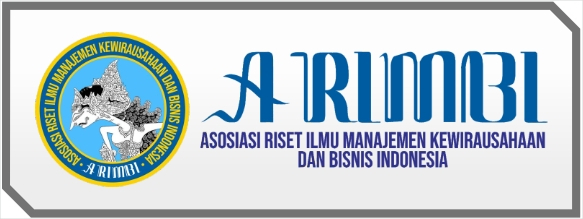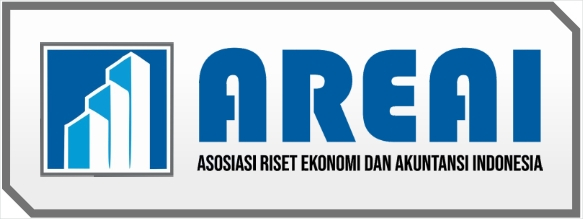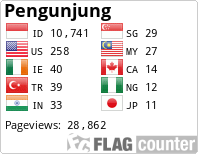HUBUNGAN KELANCARAN PENDISTRIBUSIAN PRODUK TERHADAP LOYALITAS KONSUMEN PADA PT. PUTRA ALI SENTOSA (PAS) PONDOK BATU KABUPATEN TAPANULI TENGAH
DOI:
https://doi.org/10.55606/jurima.v3i1.1576Abstract
The success of a company is determined by its marketing success, meaning that every company, before distributing its products, first thinks about access to marketing so that it can be distributed smoothly, because if this is not the case, it will certainly face difficulties when the products are marketed/distributed. This study aims to determine whether there is a smooth relationship between product distribution and consumer loyalty at PT. Putra Ali Sentosa (PAS) Pondok Batu, Central Tapanuli Regency. From the calculation of the research instrument, the results obtained between the variables X and Y for each item are declared valid and reliable because the total corrected item value is greater than the critical r value (0.30). And the Cronbach Alpha value is above 0.60. From the normality test, all of them show that the distribution of the data does not violate the normality assumption, namely the histogram diagram is in the shape of a bell and the data distribution is close to the diagonal line in the normal curve of the P-P Plot. There is a positive relationship between smooth distribution and consumer loyalty which can be proven by calculating the correlation coefficient with a strong correlation of = 0.764. From the calculation of the equation of the linear regression line, variable X and variable Y are: Y = 11.577 + 0.810 X. This means that the effect of the dependent variable (consumer loyalty) is determined by the independent variable (smoothness of distribution) with a regression coefficient of 0.810. From the calculation of the coefficient of determination, a figure of 58.4% is obtained, and the remaining 41.6% is determined by other variables not discussed in this study, such as product quality, service quality, product price and other variables. From the hypothesis testing carried out and by comparing the calculated t value with the t table value, it is found that the calculated t value is greater than t table (9.102 > 2.001) this means that the hypothesis accepted is the alternative hypothesis (Ha)
References
Adisaputro. 2013. Manajemen Pemasaran Analisis Untuk Perancangan Strategi Pemasaran. Yogyakarta: UPP STIM YKPN.
Azwar, Ahmad. 2007. Metode penelitian. Jakarta : Raja Grafindo Parsada
Blackwell, et.al. 2016. Perilaku Dalam Organisasi. Terjemahan, Jilid Pertama, Jakarta : Erlangga.
Budiarto, Teguh. 2012. Dasar-dasar Pemasaran. Jakarta: Gunadarma.
Dantes Nyoman. 2012. Metode penelitian. Yogyakarta : Andi Offset.
Daryanto. 2013. Manajemen Pemasaran, Cetakan 1. Bandung : PT Sarana Tutorian
Durianto dan Sugiarto. 2012. Strategi Menaklukkan Pasar Melalui Riset Ekuitas dan Perilaku Merek. Jakarta : PT. Gramedia Pustaka Utama
Gregorius Chandra. 2012. Pemasaran Global Konteks Offline & Online. Yogyakarta: UPP STIM YKPN
Griffin. 2014. Customer Loyalty, Menumbuhkan dan Mempertahankan Kesetiaan. Pelanggan. Edisi Refisi. Jakarta : Erlangga.
Huriyati. 2012. Bauran Pemasaran dan Loyalitas Konsumen. Bandung : Alfabeta.
Kartajaya Hermawan. 2012. Syariah Marketing. Bandung : PT Mizan Pustaka.
Kotler Philip. 2012. Manajemen Pemasaran, edisi 12, cetakan pertama, Jilid I dan II, terjemahan Hendra Teguh, , Jakarta : PT. Erlangga.
Marconi, Joe. 2013. Beyond Branding, Terjemahan Bob Sabran. Jakarta : Erlangga.
Moenir. 2012. Manajemen Pelayanan Umum di Indonesia, Jakarta : Bumi Aksara
Mowen dan Minor. 2014. Consumer Behavior. Fiflh Editions. Prentice-Hall Intemationa
Nursya'bani. 2013. Manajemen Kualitas: Yogyakarta : Global
Oentoro dan Deliyanti. 2012. Manajemen Pemasaran Modern.Yogyakarta : LaksBang PRESSindo.
Sangadji dan Sopiah. 2010. Metodologi Penelitian (Pendekatan Praktis Dalam Penelitian), Yogyakarta : Andi Offset.
Sentono, Prawiro Suyadi. 2012. Evaluasi Kinerja Sumber Daya Manusia : Teori Aplikasi dan Penelitian. Jakarta: Salemba Empat.
Situmorang, dan Lufti., 2012, Analisis Data Penelitian (Menggunakan Program SPSS), Medan : USU Press
STIE Al - Washliyah Sibolga / Tapanuli Tengah, 2022, Pedoman Penulisan dan Penyusunan Skripsi / Laporan Penelitian . Sibolga : STIE Al- Washliyah Sibolga/ Tapanuli Tengah.
Sugiyono. 2010. Metode Penelitian. Bandung : Alfabeta.
-----------2012, Metode Penelitian Bisnis, cetakan ke enam belas, Bandung : Alfabeta.
Suharno dan Yudi Sutarso. 2013. Marketing in Practice. Yogyakarta: Graha Ilmu.
Sukardi David. 2012. Manajemen Distribusi. Yogyakarta: Graha Ilmu
Sukmadinata. 2006. Landasan Psiklogi Proses Pendidikan. Bandung : Remaja Rosda Karya.
Swastha Basu.2012. Manajemen Penjualan. Yogyakarta: BPFE.
Umar Husein. 2005 Metode Penelitian. Jakarta : Salemba Empat.
Usmara. 2015. Strategi Baru Manajemen Pemasaran. Yogyakarta: Amoro book.
Wuryanto Teguh. 2014. Analisis Saluran Distribusi Agen dan Sub Agen Terhadap Volume Penjualan. Jurnal Universitas Tulungagung Bonorowo. Vol 1(2).
Downloads
Published
How to Cite
Issue
Section
License
Copyright (c) 2023 Jurnal Riset Manajemen dan Akuntansi

This work is licensed under a Creative Commons Attribution-ShareAlike 4.0 International License.


















